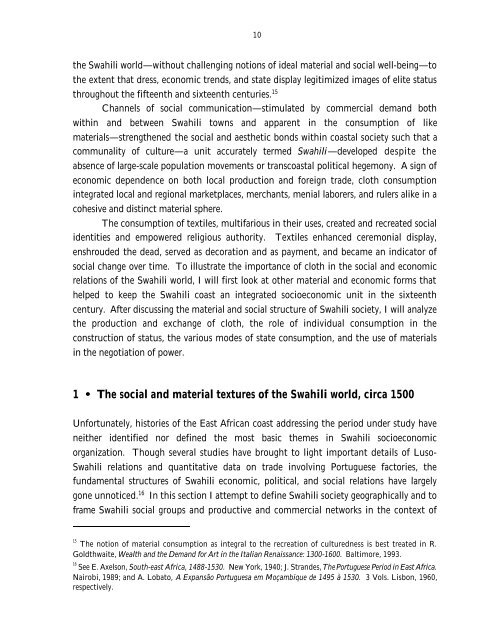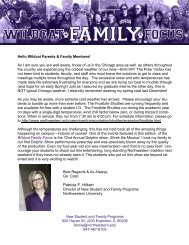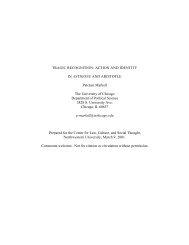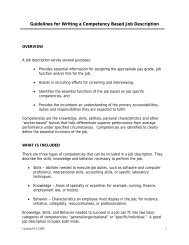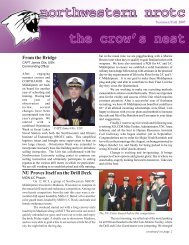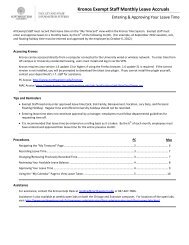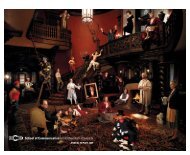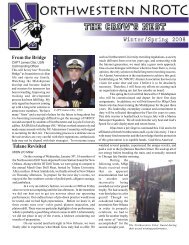Artistry Permits and Custom May Ordain - Northwestern University
Artistry Permits and Custom May Ordain - Northwestern University
Artistry Permits and Custom May Ordain - Northwestern University
You also want an ePaper? Increase the reach of your titles
YUMPU automatically turns print PDFs into web optimized ePapers that Google loves.
10<br />
the Swahili world—without challenging notions of ideal material <strong>and</strong> social well-being—to<br />
the extent that dress, economic trends, <strong>and</strong> state display legitimized images of elite status<br />
throughout the fifteenth <strong>and</strong> sixteenth centuries. 15<br />
Channels of social communication—stimulated by commercial dem<strong>and</strong> both<br />
within <strong>and</strong> between Swahili towns <strong>and</strong> apparent in the consumption of like<br />
materials—strengthened the social <strong>and</strong> aesthetic bonds within coastal society such that a<br />
communality of culture—a unit accurately termed Swahili—developed despite the<br />
absence of large-scale population movements or transcoastal political hegemony. A sign of<br />
economic dependence on both local production <strong>and</strong> foreign trade, cloth consumption<br />
integrated local <strong>and</strong> regional marketplaces, merchants, menial laborers, <strong>and</strong> rulers alike in a<br />
cohesive <strong>and</strong> distinct material sphere.<br />
The consumption of textiles, multifarious in their uses, created <strong>and</strong> recreated social<br />
identities <strong>and</strong> empowered religious authority. Textiles enhanced ceremonial display,<br />
enshrouded the dead, served as decoration <strong>and</strong> as payment, <strong>and</strong> became an indicator of<br />
social change over time. To illustrate the importance of cloth in the social <strong>and</strong> economic<br />
relations of the Swahili world, I will first look at other material <strong>and</strong> economic forms that<br />
helped to keep the Swahili coast an integrated socioeconomic unit in the sixteenth<br />
century. After discussing the material <strong>and</strong> social structure of Swahili society, I will analyze<br />
the production <strong>and</strong> exchange of cloth, the role of individual consumption in the<br />
construction of status, the various modes of state consumption, <strong>and</strong> the use of materials<br />
in the negotiation of power.<br />
1 �� The social <strong>and</strong> material textures of the Swahili world, circa 1500<br />
Unfortunately, histories of the East African coast addressing the period under study have<br />
neither identified nor defined the most basic themes in Swahili socioeconomic<br />
organization. Though several studies have brought to light important details of Luso-<br />
Swahili relations <strong>and</strong> quantitative data on trade involving Portuguese factories, the<br />
fundamental structures of Swahili economic, political, <strong>and</strong> social relations have largely<br />
gone unnoticed. 16 In this section I attempt to define Swahili society geographically <strong>and</strong> to<br />
frame Swahili social groups <strong>and</strong> productive <strong>and</strong> commercial networks in the context of<br />
15 The notion of material consumption as integral to the recreation of culturedness is best treated in R.<br />
Goldthwaite, Wealth <strong>and</strong> the Dem<strong>and</strong> for Art in the Italian Renaissance: 1300-1600. Baltimore, 1993.<br />
16 See E. Axelson, South-east Africa, 1488-1530. New York, 1940; J. Str<strong>and</strong>es, The Portuguese Period in East Africa.<br />
Nairobi, 1989; <strong>and</strong> A. Lobato, A Expansão Portuguesa em Moçambique de 1495 à 1530. 3 Vols. Lisbon, 1960,<br />
respectively.


